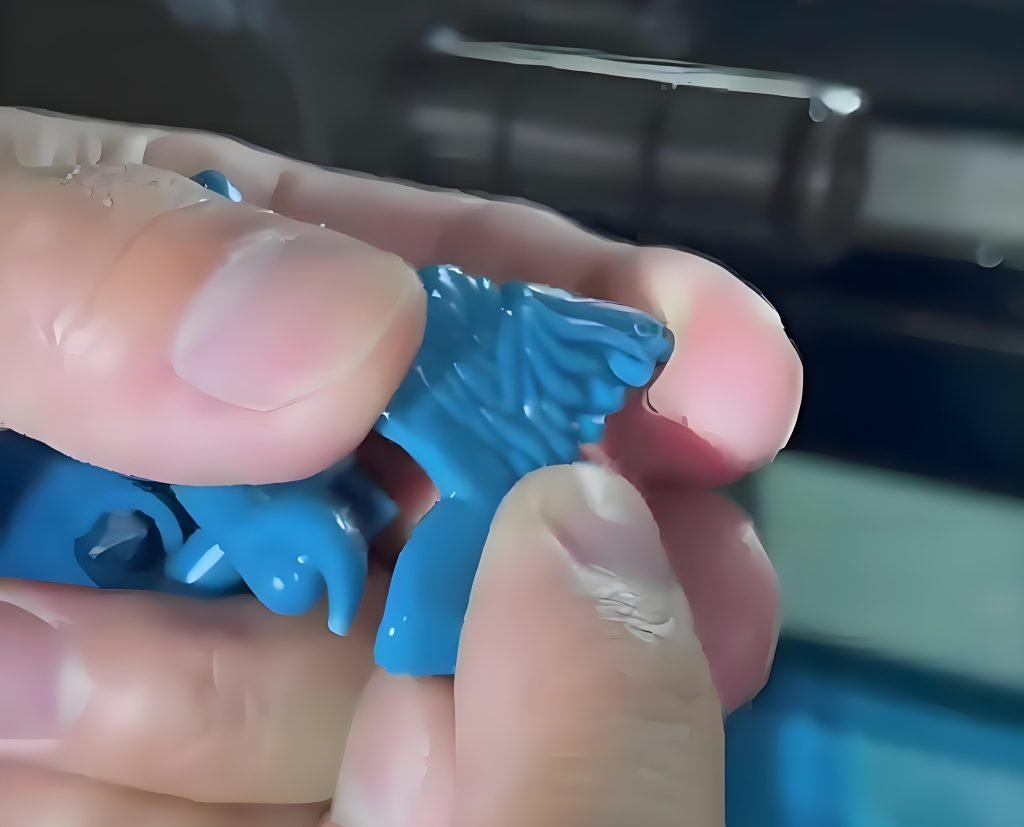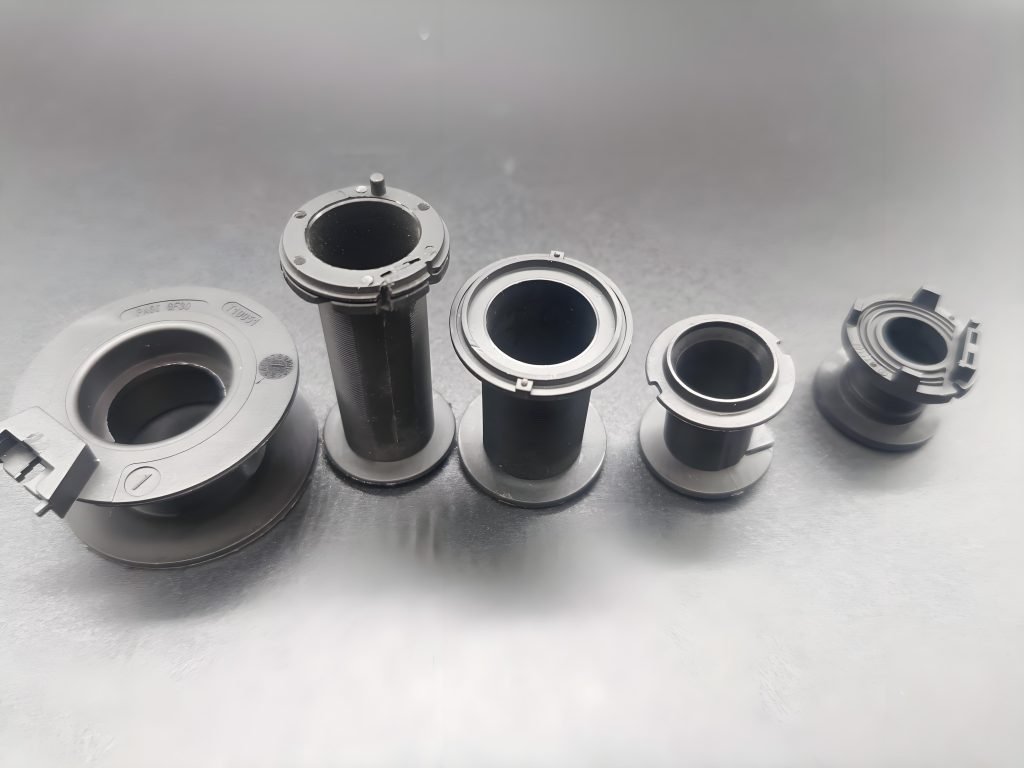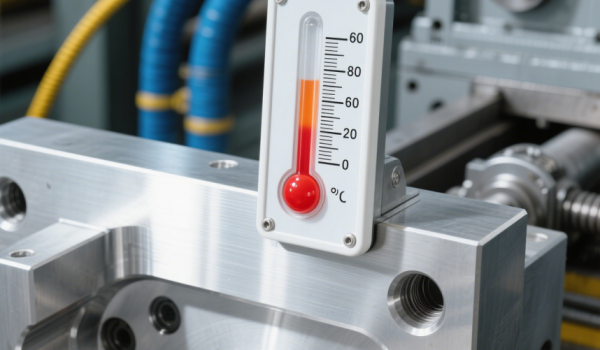Have you ever experienced that a manufacturer produces thousands of plastic parts, only to find that they are deformed or have an uneven appearance? Uncontrolled mold temperature in injection molding is frequently the underlying issue, not necessarily the material or machine used. In the complex and precise injection molding process, temperature regulation becomes the make-or-break factor. It significantly impacts product quality, appearance, mechanical properties, and overall cost, etc.

For engineers and product designers, truly mastering mold temperature injection molding control isn’t just helpful—it’s an essential skill. This guide explains what mold temperature is in injection moldingg and its impact on the process, plus useful tips for setting the right temperature based on materials.
What is Mold Temperature?
What is mold temperature in injection molding? In injection molding process, the temperature of a mold’s cavity and core is known as mold temperature, also called cavity temperature or tooling temperature, which denotes the surface heat of a mold’s cavity and core. It’s a basic control parameter in the process and a key consideration in mold design.
Maintaining proper, uniform temperature is crucial—uneven distribution can cause inconsistent shrinkage, internal stresses, and issues like deformation or warping in parts. It has a significant impact on both the molding cycle time and final product quality.
Typically, it’s first set to the minimum appropriate level for the material, then adjusted based on output quality. Its impact on product forming, secondary processing, and end use is significant.
How Does Mold Temperature Affect in Injection Molding?
Mold temperature in injection molding is a pivotal parameter governing multiple critical aspects of injection molded part quality. Precise control significantly impacts appearance, dimensions, deformation, mechanical properties, and heat deflection temperature. Understanding how does mold temperature affect in injection molding is key to process optimization.

Impact on Appearance
Mold temperature significantly affects plastic part quality. Low temperatures reduce flowability, leading to incomplete filling (short shots) and dull surfaces, especially in ABS. Cool molds also increase ejection risks, causing scratches on textured surfaces.
Higher temperature injection molding improves flow and gloss but can cause clumping, bumps, and uneven shrinkage. Semi-crystalline polymers, including reinforced resins, may lose dimensional accuracy due to inconsistent shrinkage from temperature and wall thickness variations. Some materials, like satin-finish PP, paradoxically lose gloss at high temperatures while color contrast increases.
Common defects from improper heating include rough finishes and gas marks. Solutions like multi-stage injection (adjusting speed/pressure mid-fill) can mitigate issues. Achieving optimal thermal balance is crucial for both surface quality and precision.
Impact on Product Dimensions
Mold temperature critically influences dimensional stability. High temperatures risk melt decomposition, slow cooling, and increased crystallization (especially in crystalline plastics), raising shrinkage and reducing part size. Low temperature injection molding accelerates melt freezing, lowering shrinkage but potentially increasing molecular orientation.
Maintaining stable, uniform mold temperatures is key—it minimizes shrinkage variation, enhances precision, shortens cycle time, and cuts costs. Optimal settings depend on the material:
- Crystalline polymers benefit from higher temperatures (promoting crystallization, reducing post-shrinkage).
- Soft polymers achieve better stability at lower temps.
Consistent mold temperatures ensure predictable shrinkage and tighter tolerances, regardless of material.
Impact on Deformation
Improper mold cooling system design or temperature control can cause plastic parts to warp and deform. In order to effectively prevent deformation, the temperature of each area of the mold must be reasonably set according to the product structure characteristics, especially the temperature difference between the core, cavity, cavity wall and insert, so that the different cooling and shrinkage rates of each part can offset the shrinkage differences caused by molecular orientation.
For parts with symmetrical structures, it is very important to maintain uniform mold temperature to ensure consistent cooling. Excessive mold temperature difference will cause uneven cooling and inconsistent shrinkage, generate internal stress, and ultimately cause warping deformation, which is particularly evident in parts with large wall thickness changes or complex shapes. It should be noted that after cooling, the parts usually bend toward the side with the higher mold temperature. Therefore, the temperature of the core and cavity must be reasonably selected and controlled according to needs.
Impact on Mechanical Properties (Internal Stress)
Mold temperature critically affects part strength and internal stress. Low temps cause weak weld lines, while high temps in crystalline plastics (PP, PE) increase stress cracking risk. For amorphous plastics like PC, higher temps reduce internal stress, enhancing performance.
Internal stress stems from uneven cooling shrinkage. Excessive stress or chemical exposure leads to cracking, influenced by cooling conditions. As the key stress regulator, even minor mold temperature changes significantly impact residual stress. Optimal temps vary by material and part design—thin-walled or complex parts often require higher-than-minimum mold temperatures to ensure structural integrity.
Impact on Heat Deflection Temperature
When molded under low temperature injection molding, particularly in crystalline plastics, molecular orientation is frozen, and incomplete crystallization occurs. These molecular chains may rearrange and crystallize further under high heat or during secondary processing. When the material is heated to temperatures below its rated Heat Deflection Temperature (HDT), there is an unexpected process of warping or deformation. Preventing mold growth requires approaching the temperature of the plastic’s crystallization point. By concentrating the crystallization during the initial injection molding, the risks of shrinking and distortion are minimized in the future.
Mold temperature isn’t just a basic control factor in injection molding—it’s also a key consideration that comes first in mold design.
Tips on Determining the Correct Mold Temperature
It is more difficult to create appropriate conditions as molds become more intricate to manage the temperature of a particular part of the structure. A compromise is often made between mold temperature control systems and those that require more complex components. Here are some general suggestions.
Recommended Temperatures for Common Plastics
The optimal outcome in the final product is dependent on knowing the appropriate injection molding mold temperature for various plastics. This is a table that provides recommended mold temperatures for various plastics and some information:
| Plastic Type | Recommended Mold Temperature Range | Key Considerations |
| ABS (Acrylonitrile Butadiene Styrene) | 25-70°C | Higher temperatures generally promote better gloss and surface finish. |
| PC (Polycarbonate) | 70-120°C | Offers clarity and strength; temperature is crucial for flow and minimizing stress. |
| PP (Polypropylene) | 40-80°C (Ideal: 50°C) | Versatile with a broad range. 50°C often balances flow and solidification well. |
| POM (Polyoxymethylene) | 80-105°C | High strength; benefits from this moderate temperature range. |
| PBT (Polybutylene Terephthalate) | 40-60°C (Non-reinforced) | Good electrical properties & moisture resistance; moderate temp aids stability. |
| PPS (Polyphenylene Sulfide) | 120-180°C | Handles high temperatures well, suited for demanding applications. |
| PE-HD (High-Density Polyethylene) | 50-95°C | Tough material; range ensures good flow and crystallinity. |
| PA6 (Polyamide 6 or Nylon 6) | Thin-wall: 80-90°C Thick (>3mm): 20-40°C Glass-reinforced: >80°C | Toughness requires a specific temperature based on wall thickness and reinforcement. |
| PA12 (Polyamide 12 or Nylon 12) | Non-reinforced: 30-40°C Thin-wall/Large surface: 80-90°C Reinforced: 90-100°C | Flexibility & chemical resistance need precise temp control for desired properties. |
| PA66 (Nylon 66) | Non-reinforced: 60-90°C Reinforced (30% fiber): 80-120°C | High strength/melting point; range ensures optimal flow and solidification. |
Extra Tips for Mold Temperature Control
- Design with Temperature in Mind: When drafting your mold design, factor in how to control temperature based on the outer shape of the parts you’re manufacturing.
- Prioritize Heat Transfer: If you’re designing a mold for low injection volumes but a large mold size, make sure it has good heat transfer properties—this is a must.
- Plan Fluid Channels Carefully: Design the mold’s fluid channels and sprue with a little extra space. Skip joints whenever possible; they can clog up the flow of temperature-controlling fluids big time.
- Use Pressurized Water if You Can: Opt for pressurized water as your temperature control medium when feasible. Pair it with high-pressure, high-temp hoses and manifolds.
- Match Equipment Specs to the Mold: Provide detailed specs for your temperature control equipment to ensure it works with the mold. Check the mold manufacturer’s datasheets for key numbers like flow rates.
- Add Insulation: Stick insulating plates where the mold connects to the machine platen—this helps keep the temperature steady.
- Separate Systems for Moving and Fixed Molds: Use distinct temperature control setups for the moving and fixed parts of the mold.
- Isolated Controls for Different Zones: Set up isolated temperature systems for the mold’s sides and center. This lets you use different startup temperatures during the molding process.
- Stick to Series Circuits: Connect your temperature control system’s circuits in series, not parallel. Parallel setups can cause uneven flow (thanks to resistance differences), leading to big temp swings.
- Display Supply and Return Temperature: It’s a good idea to have displays for both supply and return temperature on your mold temperature control gear—this helps you keep an eye on things.
- Incorporate Process Sensors: Aim to add a temperature sensor right into the mold. This lets you spot temperature changes during actual production.
- Build Thermal Equilibrium: Get the mold to thermal equilibrium by running multiple test injections during production, usually at least 10. Numerous factors can influence the actual temperature during balancing. A thermocouple positioned inside the mold (about 2mm from the surface) or a handheld pyrometer with an accelerometer is commonly used to measure it.
- Tweak Temperature as Needed: Adjust the mold temperature as required to fit the desired area. Most material datasheets list recommended temperature, but remember to factor in things like surface finish, mechanical properties, shrinkage, and cycle time.
- Adjust for Part Requirements: Regarding precision parts or those with strict appearance or safety standards, opt for a higher mold temperature. For simpler parts where you’re trying to cut costs, a lower temp might work—but be aware of the trade-offs, and inspect parts closely to make sure they meet customer needs.
Summary: Precision Temperature Control—Partner with Injection Molding Expert

Mastering mold temperature in injection molding is crucial. It directly impacts product quality, integrity, and production efficiency. Understanding its importance and setting the correct temperature can significantly improve part quality and consistency. Careful control of mold temperature injection molding is the core element for success.
Why Partner With Fecision for Your Injection Molding?
At Fecision, we specialize in providing top-quality injection molding services, with a particular focus on effectively handling mold temperature. We commit to :
- High-Precision Tolerances
Achieves an accuracy of ±0.001 inches (0.025 mm)..
- Rapid Production & Output
Cycles: 15–60 seconds per part; hourly output exceeds 1,000+ parts.
- Eco-Efficient Material Use
Under 5% waste; supports recyclable materials (e.g., PET, PP, ABS) and 200+ material options.
- Cost & Energy Optimization
Low per-unit costs at scale with energy efficiency achieve up to 30%.
- Durable Tooling & Quality Finishes
Tools withstand millions of cycles; surfaces achieve Ra 0.4–1.6μm smoothness.
Whether it’s dealing with different plastic materials or designing intricate parts, Fecision is the perfect solution. For companies looking for top-notch injection-molded products, they are the quality partners and have a great understanding of mold temperature.
Ready to master mold temperature? Contact Fecision for a temperature-optimized molding solution. Let’s transform your plastic parts from functional to exceptional.




